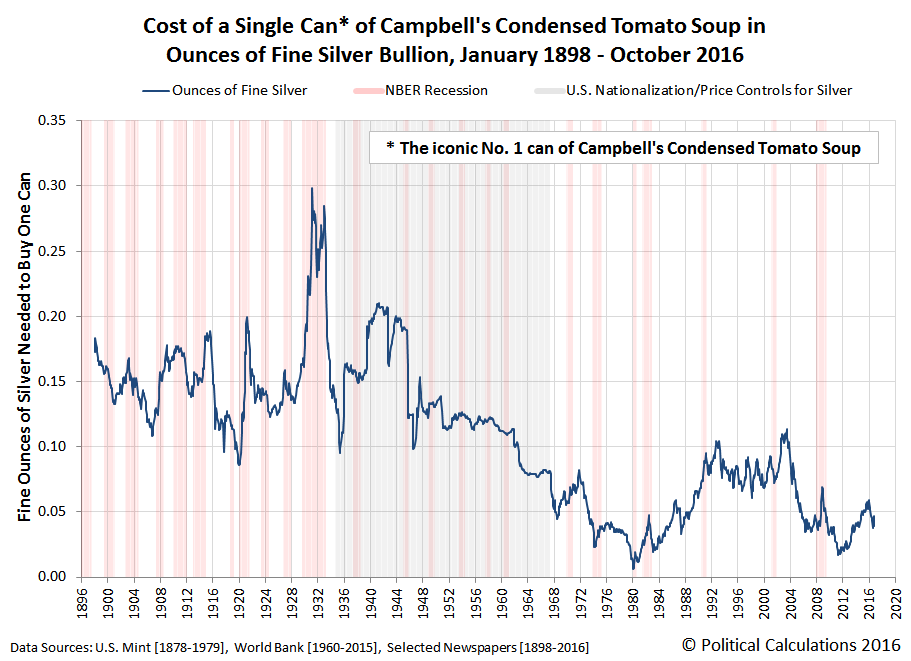Once upon a time, and for a very long time, Americans could buy a single can of Campbell's Condensed Tomato Soup for the price of just one dime.
And for much of the time when Americans could buy a can of condensed tomato soup for a dime, U.S. dimes were made of silver. Or more specifically, they were made of "junk silver", which means that they were made of 90% silver and 10% copper by weight.
Since nearly all of their value was derived from their silver content, for all practical purposes, Americans paid for their soup with silver. We wondered how many ounces of silver it would take to buy a single Number 1 can of Campbell's Condensed Tomato Soup in any month throughout its entire history, even after U.S dimes stopped being made from silver in 1965. Seeing as we have all those monthly prices for silver going back to 1880, we were able to generate the following chart showing how many fine ounces of silver bullion it would take to buy a can of Campbell's Tomato Soup in each month since January 1898, which is as far back as we have that price data.
In terms of its equivalent value in silver, Campbell's Tomato Soup has become more affordable, where since U.S. price controls over silver were ended after 1967, the relative price of soup has dropped from a typical range of 0.10-0.20 ounces per can to a range of 0.02 to 0.12 ounces per can.
By contrast, the average price of a can of Campbell's Condensed Tomato Soup in U.S. dollars has risen from $0.10 in 1967 to $0.80 as of October 2016, a factor of 8X. Over the same time, the price of one fine ounce of silver has risen by 15X in terms of U.S. dollars. Meanwhile, since 1967, the price of gold is up over 35X.
Since we're coming up on Halloween, which do you suppose would be the more useful form of currency after the zombie apocalypse?
Labels: data visualization, food, inflation
Welcome to the blogosphere's toolchest! Here, unlike other blogs dedicated to analyzing current events, we create easy-to-use, simple tools to do the math related to them so you can get in on the action too! If you would like to learn more about these tools, or if you would like to contribute ideas to develop for this blog, please e-mail us at:
ironman at politicalcalculations
Thanks in advance!
Closing values for previous trading day.
This site is primarily powered by:
CSS Validation
RSS Site Feed
JavaScript
The tools on this site are built using JavaScript. If you would like to learn more, one of the best free resources on the web is available at W3Schools.com.


